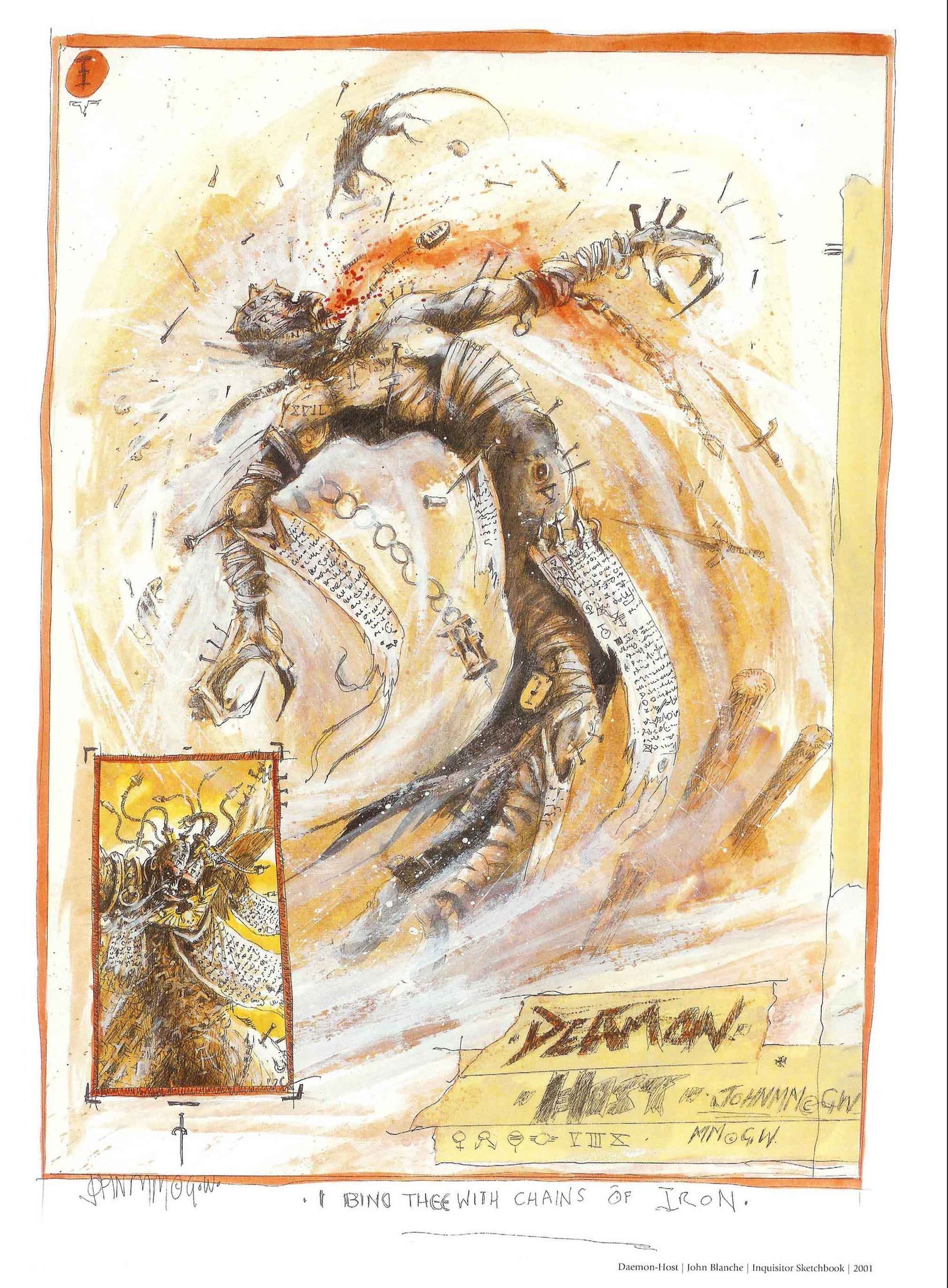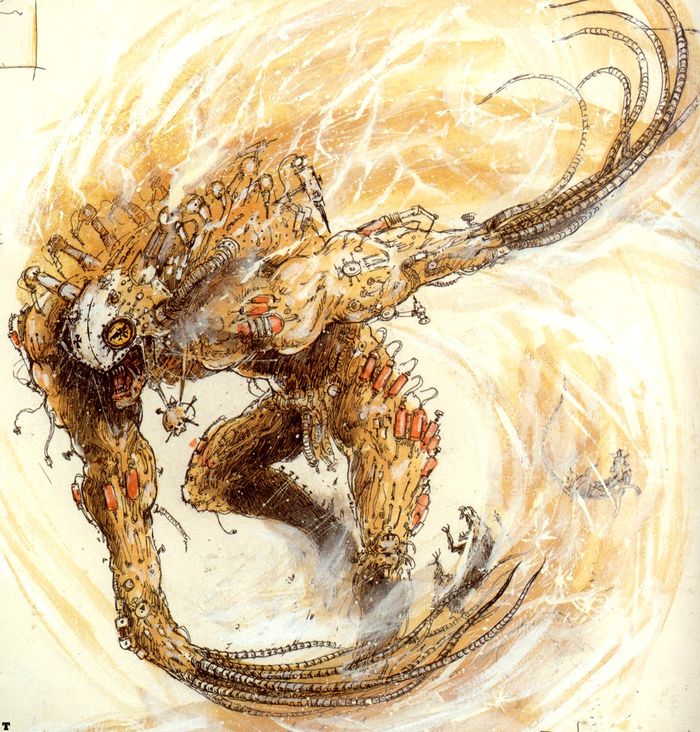I'm writing this for my wargaming project (which I'm tentatively calling The Dolorous Stroke in my own head), but it's loose at the moment. You can adapt it to other medieval settings, since basically it's a collection of weird chivalrous orders and why they go on quests and adventures. So, you get a nice set of motives for fighter/knight/cleric/cavalier/paladin PCs.
Here's the idea. The setting has knights divided into orders. Each Order is a distinct organisation with a few distinguishing features:
It's stronghold. This is a single geographic location where the Order is based. It could be a castle, a subterranean vault, a village, a cathedral. All sorts. This is where they meet, store their knowledge, get their equipment and salley forth from.
Its image of the True Knight. This is what they think a knight should aspire to. Basically the orders are all on a sort of quest for self-perfection but disagree over what that perfection looks like and how to achieve it.
Its Quests. Basically, what they do to become a True Knight. So the Order of Herne (who believe that a True Knight is one who has vanquished all monsters) quest to find ever more dangerous and exotic beasts to slay.
Its Insignia. This is how you recognize the Order. This could be heraldry (often an Order have something distinctive that appears on every knight's heraldry) but is just as often not. For example, the Order of the Wyrm don't wear a gauntlet on their right hand, to keep it free for spellcasting.
So you have various weirdos venturing out from their central stronghold to go on some personal quest that will make them a Better Knight, and of course their ideals won't match those they encounter most of the time. You have knights trying to slay wild beasts, to dig up the bones of dead heroes, to drink their foes blood, to get the most blinged-out gear ever, and so on.
Here are some of the Orders I'm ruminating on. Most are only loose ideas at this stage.
The Order of the Wyrm:
Magician-knights. Believe that the true goal of knighthood is power, and that magical knowledge is the surest root to it. They quest to find new grimoires and improve their arcane power. Their stronghold is a bleak black granite tower, filled with libraries of forbidden lore and fell spirits bound into the dungeons. Their insignia is a bare right hand, free of a gauntlet, with which to cast spells.
The Order of Herne:
Magician-knights. Believe that the true goal of knighthood is power, and that magical knowledge is the surest root to it. They quest to find new grimoires and improve their arcane power. Their stronghold is a bleak black granite tower, filled with libraries of forbidden lore and fell spirits bound into the dungeons. Their insignia is a bare right hand, free of a gauntlet, with which to cast spells.
The Order of Herne:
Hunter-knights. Believe that a knight is measured by the monsters they have slain, and that the greater the foe defeated, the more noble the knight. They quest to hunt down and slay ever more mighty and exotic beasts. Their stronghold is a hunting lodge in the deep forest, and their insignia a pair of antlers mounted on their steed's brow.
The Order of the Red Maw:
Vampire-knights. Their esoteric order holds that nobility is a property of the blood (after all, aristocracy is hereditary; the right to rule is carried by blood). It stands to reason, therefore, that by taking on the blood of noble foes, the vampire can absorb that nobility into themselves. They quest to find and defeat the most worthy knights they can find, drinking their opponents' blood. Their stronghold is a deep underground vault, where the blood of every member of the order and every one of their defeated foes is poured into a huge well to be stored forever. Their insignia is a red stain to their armour.
Vampire-knights. Their esoteric order holds that nobility is a property of the blood (after all, aristocracy is hereditary; the right to rule is carried by blood). It stands to reason, therefore, that by taking on the blood of noble foes, the vampire can absorb that nobility into themselves. They quest to find and defeat the most worthy knights they can find, drinking their opponents' blood. Their stronghold is a deep underground vault, where the blood of every member of the order and every one of their defeated foes is poured into a huge well to be stored forever. Their insignia is a red stain to their armour.
The Order of the Unicorn:
Penitent-knights. They hold religion to be the most important ideal, and thus that the true knight is pious and holy. Their stronghold is a huge cathedral where the knights of this order pray, fast, flagellate and meditate, and their quests tend to be missions to protect nunneries, shrines and relics from danger. Their insignia is long reams of holy text pinned to their surcoat.
The Order of Golden Splendour:
Miser-knights. They believe that prosperity, opulence and luxury are the properties of a true knight, and thus that a knight should endeavor to be known for their vast wealth and the great works they achieve with it. Their stronghold is a beautiful manor surrounded by well-tended gardens, at the heart of which lies the Order's treasure vault, Their quests tend to be concerned with acquiring ever more wealth for their order, and their insignia is the gold trim on their armour.
Penitent-knights. They hold religion to be the most important ideal, and thus that the true knight is pious and holy. Their stronghold is a huge cathedral where the knights of this order pray, fast, flagellate and meditate, and their quests tend to be missions to protect nunneries, shrines and relics from danger. Their insignia is long reams of holy text pinned to their surcoat.
The Order of Golden Splendour:
Miser-knights. They believe that prosperity, opulence and luxury are the properties of a true knight, and thus that a knight should endeavor to be known for their vast wealth and the great works they achieve with it. Their stronghold is a beautiful manor surrounded by well-tended gardens, at the heart of which lies the Order's treasure vault, Their quests tend to be concerned with acquiring ever more wealth for their order, and their insignia is the gold trim on their armour.
The Order of the Black Lance:
Murder-knights. These knights believe that a knight's role is simple; they are a soldier, which is to say a killer of their fellow men. Thus, a true knight has only one defining characteristic, an immense talent for murder. Their methods are varied and dishonorable, and they are shunned by other orders for the unpredictable killings they commitThey have no true stronghold nor insignia, and are organised only loosely around a number of safehouses.
The Order of Thorn and Sting
Torturer-knights. They hold that the measure of a knight's worthiness is his ability to endure suffering. Thus, their quests tend to involve the knight taking on some horrible peril that will cause them pain and injury before they can prevail; when no such peril is available they train their fortitude by scourging one another's flesh with ever more inventive torments. Their stronghold is a dour fortress of grey stone and weather-beaten wood, lit from within by orange fires and with smoke pouring from its high chimneys. The insignia of the order is, inevitably, their many highly prominent scars.
The Order of Bones
Gravedigger-knights. They believe that an appreciation for their own mortality marks a knights true worth, and that whilst life is fleeting the legacies of the noble dead are eternal. These morbid knights study the bones of the dead, so as to gain a greater understanding of the forces of entropy and extinction that act upon all mortals. Their quests and studies are esoteric, and many step slightly outside of normal mortality, becoming living-dead revenants or sustained more by will than biology. Their stronghold is a great ossuary, and their insignia is a bone taken from this great mass grave as a reminder of their own impending death.
The Order of Thorn and Sting
Torturer-knights. They hold that the measure of a knight's worthiness is his ability to endure suffering. Thus, their quests tend to involve the knight taking on some horrible peril that will cause them pain and injury before they can prevail; when no such peril is available they train their fortitude by scourging one another's flesh with ever more inventive torments. Their stronghold is a dour fortress of grey stone and weather-beaten wood, lit from within by orange fires and with smoke pouring from its high chimneys. The insignia of the order is, inevitably, their many highly prominent scars.
The Order of Bones
Gravedigger-knights. They believe that an appreciation for their own mortality marks a knights true worth, and that whilst life is fleeting the legacies of the noble dead are eternal. These morbid knights study the bones of the dead, so as to gain a greater understanding of the forces of entropy and extinction that act upon all mortals. Their quests and studies are esoteric, and many step slightly outside of normal mortality, becoming living-dead revenants or sustained more by will than biology. Their stronghold is a great ossuary, and their insignia is a bone taken from this great mass grave as a reminder of their own impending death.



























